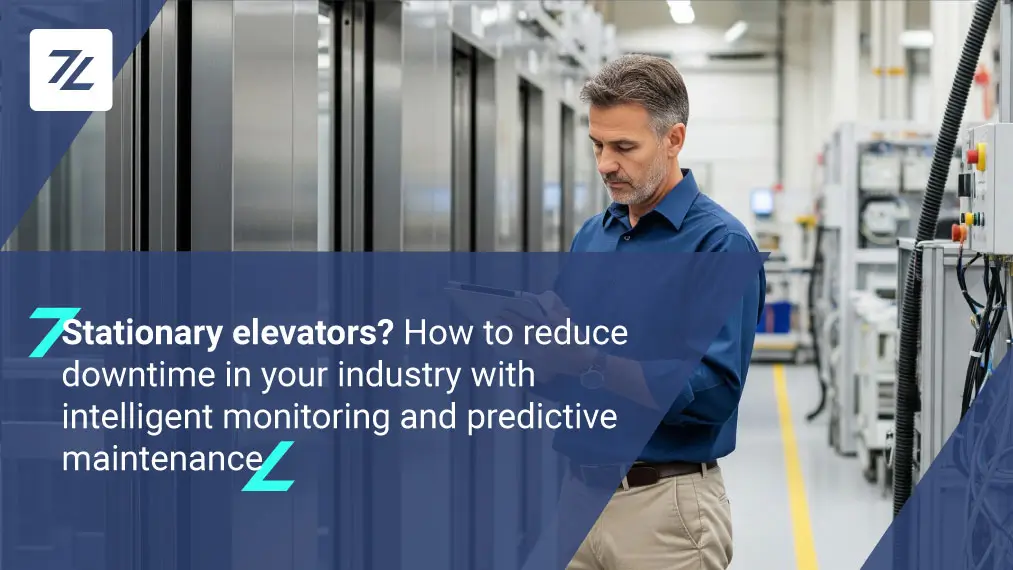When it comes to workplace safety, nowadays, a yellow helmet and vest just aren’t enough. Managers in heavy industries are trying to bring visibility and higher security measures to their workforces, but sometimes, they don’t know where to start.
This is where IoT technology enters the picture.
More often than not, in terms of IoT, most resources go to production monitoring for the sake of cutting costs and reducing energy consumption.
So, we are going to reveal what ways IoT can increase the level of safety for the people involved, and what can be done today to implement these high-tech measures.
Data-driven risk assessment
Let’s begin with what should be the first step for every company that wants to increase safety measures, whether it is digital or physical data gathering.
You need accurate data for your production systems and your environment in order to make the best decisions. Thanks to IoT, it’s easy to gather all kinds of information with sensors and then send them to the Cloud.
The main goal, in this case, is to protect the workers’ health and safety.
Identifying the main hazards
Once you have all the necessary data, it’s time to identify the main hazards. Of course, this all depends on the type of industry and the environment the workers are in.
Let’s take a look at some of the main hazards:
- Manual material handling
- Chemical products
- Machinery
- Heights
- Electrical hazards
- Fire hazards
- Noise
- Radiation
- Temperature fluctuations
Industrial IoT technology handles everything
Once you can properly monitor, locate, and identify hazards in the workplace, because of IoT technology, you don’t need to take action. The system can handle it by itself. For example, if the system identifies that an operator’s hand is too close to the metal sheet cutter, the system immediately shuts down.
Now, let’s take a look at some of the most common ways IoT solutions can improve workplace safety.
Air quality monitoring
Air quality should never be overlooked in any work environment especially, in heavy industry.
Studies show that people spend 90% of their time indoors. The first thing that should be monitored is CO2 levels. Then, a list of the most common pollutants and chemicals can be made for each industry, depending on risk factors.
Thankfully, the setup of such a system is easy with IoT. All you need to do is use proper air quality monitoring sensors and set the threshold for each one. Once the system discovers that there is too much of a certain element in the air, it can send a notification.
But it’s not only air quality sensors that can be implemented. Depending on the environment all types of IoT solutions can be devised.
For example, tunnel ventilation systems can be devised where monitoring of air quality is crucial for worker safety. But this is not only a question of monitoring air quality. In large tunnels, where industrial fans are used to suck out contaminated air, it is also a good idea to monitor the operation of the fans themselves. Because, if the company sets an alarm system when the fans are working poorly or have stopped working altogether, it’s easy to evacuate the workers, and keep everyone who is involved safe.
Temperature monitoring
Both cold and warm temperatures, in extremes, can have serious consequences on health. From sunstroke to frostbite, it’s all the better to be avoided. And, it’s not the only atmospheric temperature that needs monitoring. In most heavy industry environments, the temperature during the production process is vitally important.
For example, in the metal industry, temperatures can reach 3,000 °C when metal alloys are melted and processed. So, precise thermal imagery can help the workers determine when a certain metal component is safe to work with or not.
In another vein, with extremely low temperatures, workers need to know what kind of protective clothing and equipment they need to wear and use. If you look at industrial refrigeration systems, as an example, it’s clear how IoT monitoring is ensuring workplace safety.
Chemical dangers
Chemical hazards pose a wide range of potential injuries and health problems: furthermore, working with chemicals every day is a situation in which many people in heavy industry are involved.
Some of the physical dangers are:
- flammability
- corrosion
- explosibility
Another issue is airborne concentration of chemicals which we already covered.
As it is with other examples, good data analysis, achieved through IoT, can ensure worker safety.
Predictive maintenance of machinery
At first glance, predictive maintenance is not the first priority when it comes to workplace safety. But, if you look at it more closely, the benefits are clear.
Workplace injuries can be prevented with proper analytic tools. This is why IoT is the ideal and smart solution.
Predictive maintenance solutions can help prevent unexpected equipment breakdowns, can enable optimal machine maintenance, and allow production to run uninterrupted.
The benefits to worker safety are clear: with properly working machines there is less chance of injury.
This is precisely what has been done with MegaDiamant. In just 9 months, we implemented Wi-Res Box for them, enabling Mega Diamant to remotely monitor all operating parameters of their machinery in real-time such as:
- rotation speeds
- motor frequencies
- total energy consumption
If you would like to learn more about this topic, join our webinar with MegaDiamant on September 21st! We’ll see you there.
Share This Story, Choose Your Platform!
Follow Zerynth on
Latest Posts






